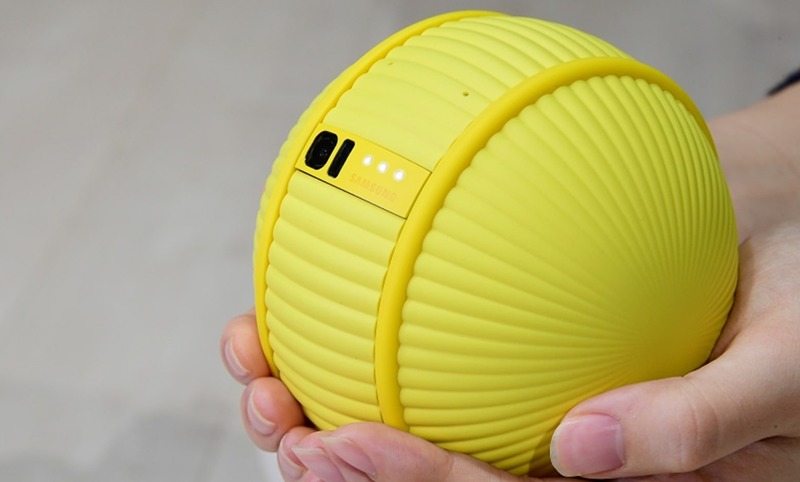Samsung’s unveiling of fitness exoskeleton and rolling robot at the CES 2020 suggests the company is trying to gain a foothold in the healthcare field.
Ballie
The Korean tech giant introduced ‘Ballie’, a tiny rolling robot. The small ball, which bears resemblance to the much-loved BB-8 robot from the Star Wars franchise, is designed to act as a personal assistant around the home, reports Telegraph. Samsung described various ways Ballie might one day help you, from recognizing if your floors are dirty and automatically activating a robot vacuum in your house, to somehow serving as a “fitness assistant.”
Read more Samsung to Include Blood Pressure Monitor on its Galaxy Watch Active2
The tiny bot has a mobile interface and a built-in camera. It is voice-activated and can follow users around the house.
Samsung isn’t the first company to build robots as at-home companions. Sony, for example, recently released APIs for Aibo, its robot dog, that will apparently let you make services and applications for Aibo that let it interact with smart home devices.
GEMS
Last year, Samsung launched GEMS (Gait Enhancing and Motivation System) exoskeleton that’s supposed to help the physically impaired. But now, the company is saying that it is a workout device.

“In the Age of Experience, we need to re-think the space we have to accommodate our diverse and evolving lifestyles,” said H.S. Kim, President and CEO of Consumer Electronics Division, Samsung Electronics.
Paired with a pair of augmented reality (AR) glasses, the exoskeleton can now be used for workouts as a fitness trainer that can give you instructions as you go through your regular workout routine. This device can track your movements when you workout and keep count while also offering words of encouragement.
Read more Hyundai Develops Lighter Exoskeleton to Ease Burden in Overhead Work
When you finish your workout, a companion app lets you view your performance and data.
There are already several companies that offer assistive wearable exoskeletons. It looks like Samsung is going after an even larger part of the population, essentially serving as an at-home gym.












